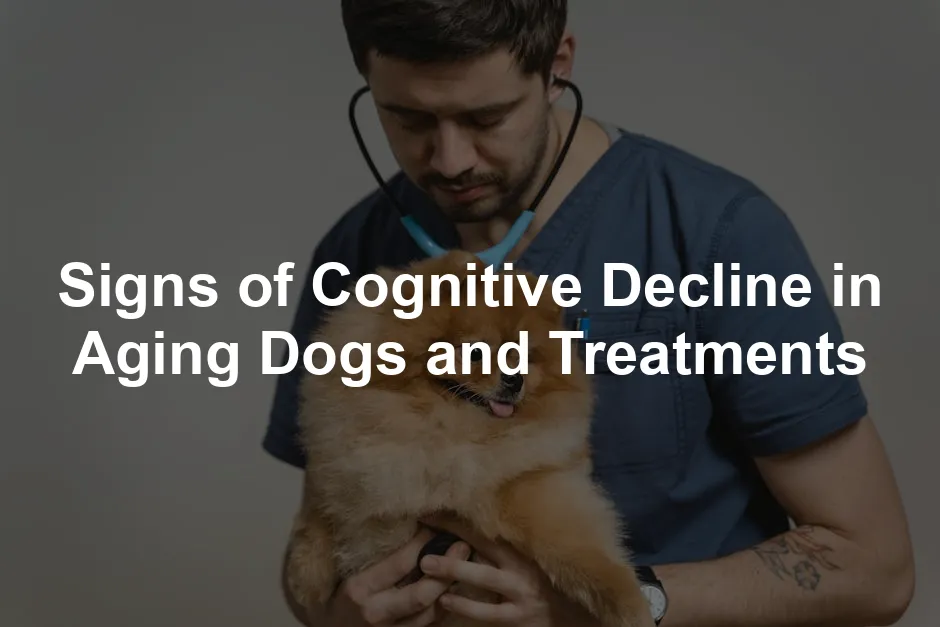Introduction
As our furry companions age, they face numerous challenges. One significant concern is cognitive decline, often referred to as Canine Cognitive Dysfunction Syndrome (CCDS). This condition resembles Alzheimer’s disease in humans, causing a decline in awareness, memory, and learning abilities.
Recognizing the early signs of cognitive decline is vital. Early detection allows for timely interventions that can enhance the quality of life for older dogs. Just like humans, dogs need support as they navigate their golden years. By identifying symptoms early, pet owners can implement strategies to help their furry friends maintain their zest for life.
In the following sections, we will discuss the symptoms of CCDS, how it’s diagnosed, available treatment options, and management strategies that can significantly improve a dog’s overall well-being. So, let’s wag our tails and dive into this important topic!
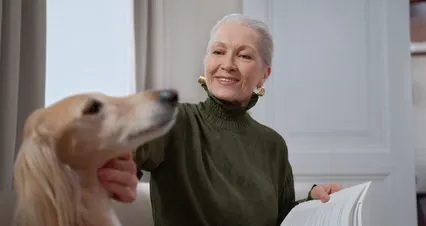
Understanding Canine Cognitive Dysfunction Syndrome (CCDS)
Definition of CCDS:
Canine Cognitive Dysfunction Syndrome (CCDS) is a neurodegenerative disorder that affects aging dogs. It leads to cognitive decline, similar to dementia in humans. Symptoms can include confusion, disrupted sleep patterns, and changes in behavior.
Prevalence:
CCDS is surprisingly common. Research indicates that approximately 28% of dogs aged 11-12 years exhibit at least one sign of cognitive dysfunction. By the age of 15, this number skyrockets to about 68%. This means that as your dog ages, the chances of experiencing cognitive decline increase significantly.
Causes:
Several biological factors contribute to CCDS. Aging leads to oxidative damage in brain cells, which can result in cognitive decline. Additionally, the accumulation of beta-amyloid protein in the brain interferes with nerve signaling. This buildup impairs memory and learning, making it more challenging for dogs to navigate their surroundings and remember familiar faces.
Moreover, other factors such as decreased blood flow to the brain and degradation of neurotransmitters can exacerbate CCDS. Dogs with a sedentary lifestyle or those that suffer from conditions like epilepsy may be at higher risk.
Understanding CCDS is the first step in helping your furry friend. By recognizing the signs and knowing the prevalence, you’ll be better equipped to take action when needed.
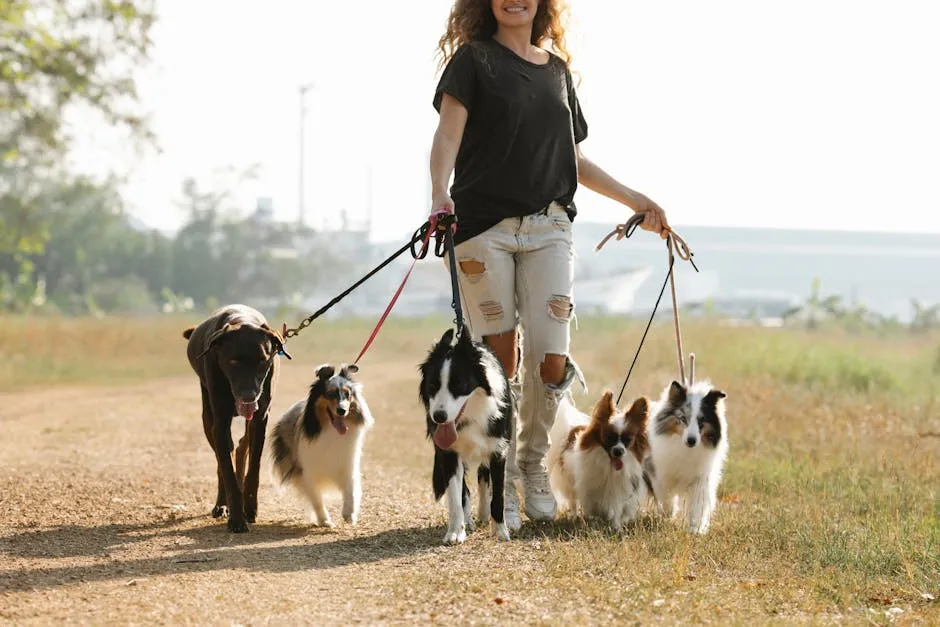
Signs of Cognitive Decline in Aging Dogs
Aging dogs can develop cognitive dysfunction, often referred to as Canine Cognitive Dysfunction Syndrome (CCDS). It’s essential to recognize the signs early to enhance their quality of life. One helpful tool for identifying symptoms is the DISHAA assessment, which encompasses various behavioral changes commonly observed in aging dogs. Let’s break down this acronym for clarity.
DISHAA Assessment
– Disorientation: Dogs may seem confused. They might get lost in familiar places or stare blankly at walls. Imagine your dog wandering around the house, unsure of where they are—it’s a frustrating sight for both of you.
– Interactions: Changes in social behavior can signal cognitive decline. Some dogs become overly clingy, while others might show aggression or withdraw from family members. You might notice your once-social dog avoiding you during family gatherings.
– Sleep-wake cycle: Aging dogs often experience sleep disturbances. They may sleep more during the day and become restless at night, leading to midnight pacing. Think of it as your dog participating in their own version of a late-night talk show.
– House soiling: Inappropriate elimination can occur. A previously house-trained dog may start having accidents indoors. This change can be distressing for both dog and owner, as it might seem like they’ve forgotten their potty training.
– Activity level changes: You might notice aimless pacing or a decreased interest in play. Your dog may go from a ball of energy to a couch potato, leaving you wondering where the playful pup went.
– Anxiety: Increased anxiety or the development of new phobias can be common. An aging dog may become fearful of everyday noises or experiences they once enjoyed, leaving you trying to comfort them during a thunderstorm.
Other Common Symptoms
In addition to the DISHAA signs, several other symptoms may indicate cognitive decline:
– Changes in appetite: A dog that once gobbled down meals may start ignoring food entirely. This could lead to unintended weight loss, causing concern for owners. Consider offering dog treats packed with antioxidants to entice their appetite while supporting their health.
– Lack of self-grooming: Dogs may stop grooming themselves, resulting in a scruffier appearance. You might find yourself needing to step in and give your furry friend a little extra TLC. A set of dog grooming tools can help keep them looking their best.
– Impaired memory: Forgetting commands they’ve known for years or failing to recognize familiar people can be particularly heartbreaking. It’s tough watching your dog struggle with what once came so naturally. This is where a dog training clicker can help reinforce those memories with positive reinforcement.
It’s crucial to monitor your dog’s behavior closely. If you notice these signs, consulting a veterinarian is a wise step. Early intervention can make a world of difference in managing cognitive decline and preserving your dog’s overall well-being. By staying vigilant and proactive, you can help your aging dog live their golden years with dignity and love.
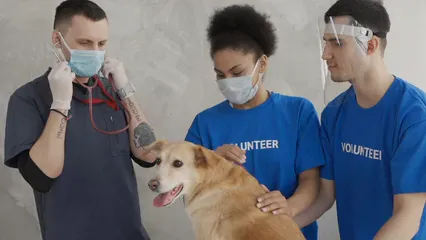
For more information on the signs of cognitive decline, check out this article on cognitive decline in aging dogs.
Treatment Options for Cognitive Dysfunction
Caring for an aging dog with cognitive dysfunction can feel like a riddle wrapped in a mystery. Fortunately, various treatment options can help manage symptoms and improve their quality of life. Let’s take a closer look at the available treatments.
Pharmaceuticals
When it comes to medications, selegiline, known as Anipryl, often takes the spotlight. This FDA-approved drug helps boost dopamine levels in your dog’s brain. Think of it as a little pep talk for their neurons! By enhancing neurotransmitter function, selegiline can alleviate some symptoms of cognitive dysfunction. You can find it here.
Other medications, like propentofylline, can also play a role. They help improve blood circulation to the brain, promoting healthier cognitive function. Always consult your veterinarian before starting any medication; they can tailor the treatment plan to your dog’s specific needs.
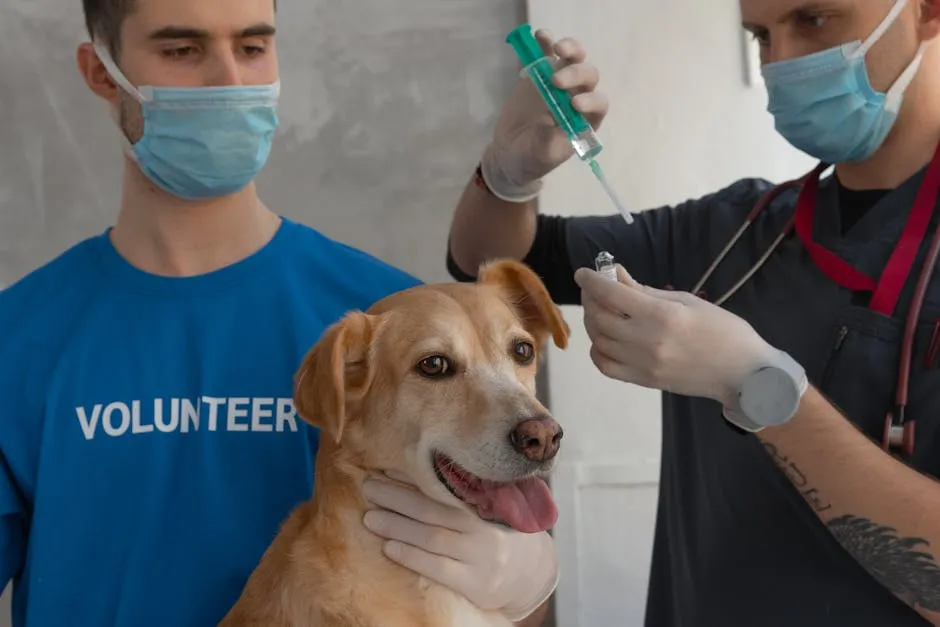
Dietary Interventions
What your dog eats can significantly impact their cognitive health. Specialized diets, such as Hill’s Prescription Diet B/D Canine Brain Health Dry Dog Food, are crafted to support brain function. Packed with antioxidants and omega-3 fatty acids, these diets can help slow cognitive decline. Don’t forget about the power of supplements! Omega-3 fatty acids, in particular, are known for their brain-boosting properties.
Antioxidants, such as vitamin E and SAMe (S-adenosylmethionine) supplements, can also provide additional support. Think of these nutrients as tiny warriors battling oxidative stress in your dog’s brain. They help reduce inflammation and improve overall cognitive function, which is crucial for an aging pup.

Environmental Enrichment
Keeping your dog’s mind engaged is essential. Think of mental stimulation as a workout for their brain. Puzzle toys are fantastic for this purpose. They encourage your dog to think critically and problem-solve, keeping their mind sharp.
Training sessions can also be a fun way to reinforce commands and teach new tricks. Even simple activities, like scent games or interactive play, can stimulate your dog’s brain. Remember, a tired dog is a happy dog, so mix in regular exercise to keep them physically fit too!

Behavioral Strategies
Maintaining a consistent routine is vital for aging dogs. Predictability helps reduce anxiety and allows your dog to feel secure. Try to establish regular feeding, walking, and play schedules. Create a safe environment by minimizing changes in furniture or household routines.
Additionally, consider providing a quiet space for your dog to retreat to when they feel overwhelmed. Using night lights can also be helpful for those nighttime wanderings.
Lastly, try to limit stressors in their environment. Loud noises or sudden changes can be disorienting for dogs with cognitive dysfunction. By fostering a calm atmosphere, you’ll help your furry friend feel more comfortable.

Alternative Therapies
While not all dogs will respond to alternative therapies, many pet owners find value in adding them to their dog’s treatment plan. Acupuncture mats, for instance, can promote relaxation and alleviate discomfort. Physical rehabilitation can also improve mobility and overall well-being.
Incorporating supplements like ginkgo biloba or phosphatidylserine may provide cognitive benefits, but always consult with a veterinarian before starting any new treatment.
In summary, a multi-faceted approach can be most effective for managing canine cognitive dysfunction. By combining pharmaceuticals, dietary changes, mental stimulation, and behavioral strategies, you’ll be well-equipped to support your aging dog. Remember, every pup is unique, so working closely with your veterinarian is the key to finding the right treatment plan tailored to your dog’s needs.
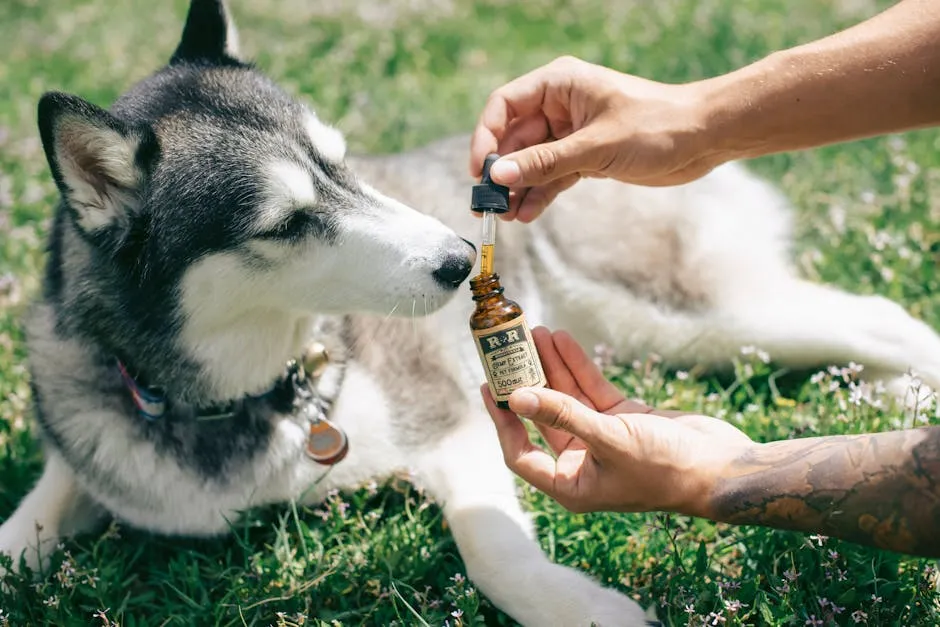
Living with an Aging Dog with CCDS
Quality of Life
Caring for an aging dog with Canine Cognitive Dysfunction Syndrome (CCDS) can feel like managing a toddler’s whims—challenging yet rewarding. To enhance your dog’s quality of life, regular veterinary check-ups are essential. These visits help track any changes in health and cognitive function over time. Be proactive! Discuss behavioral changes with your vet. They can help rule out other issues that may seem like CCDS but are actually different health concerns.
Routine is your dog’s best friend. Keeping a consistent schedule for feeding, walks, and playtime allows your dog to feel secure. Imagine your pup knowing that breakfast happens promptly at 8 AM. This predictability can ease anxiety and help them navigate their day.
Additionally, monitor behavioral changes closely. Is your dog getting lost in familiar surroundings? Perhaps they’re sleeping more during the day. Keeping a log of these changes can assist your veterinarian in providing the best care possible.
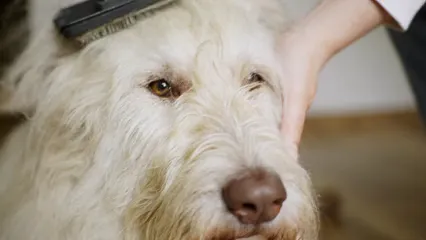
Environmental enrichment is crucial too! Incorporate puzzle toys and scent games into their daily routine. These activities stimulate their minds and provide a sense of purpose, making them feel young and engaged. Remember, an active mind is a happy mind!
Owner Support
Every pet owner knows that caring for a dog with cognitive decline can be tough. That’s why seeking support is vital. Join local or online support groups dedicated to pet owners facing similar challenges. Sharing experiences can provide comfort, tips, and resources. You’re not alone in this journey!
Don’t hesitate to reach out to your veterinarian for advice. They can recommend helpful resources tailored to your dog’s needs. Additionally, consider consulting a veterinary behaviorist. They can offer specialized strategies to manage anxiety and behavioral changes.
Lastly, take care of yourself! Caring for a dog with CCDS can be emotionally taxing. Make sure you carve out time for self-care. Not only will this help you manage your stress, but it will also enable you to provide the best care for your furry friend.
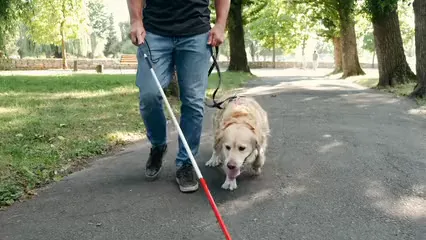
By focusing on quality of life and seeking support, you can help your aging dog navigate this challenging time with love and dignity. Implementing these strategies will ensure that your canine companion enjoys their golden years with joy and comfort.
Conclusion
In this article, we’ve highlighted the crucial signs of cognitive decline in aging dogs, known as Canine Cognitive Dysfunction Syndrome (CCDS). Understanding the symptoms—like disorientation, changes in social interactions, and sleep disturbances—is vital for early detection. By identifying these signs, you can take proactive steps to enhance your dog’s quality of life.
Early intervention is key. Just as we wouldn’t ignore signs of cognitive decline in ourselves, the same applies to our furry friends. Recognizing these behavioral changes can lead to timely support and treatment, which can significantly improve their well-being. It’s essential to consult your veterinarian if you suspect your dog is experiencing cognitive dysfunction. They can provide tailored advice and treatment options, ensuring your beloved companion gets the care they need.
Remember, your dog’s golden years should be filled with love, comfort, and engagement. By staying vigilant and seeking help when necessary, you can help your aging dog navigate this challenging phase with dignity and joy. And don’t forget to check out dog anxiety wraps to help soothe your pup during stressful times.
FAQs
Can dog dementia be treated?
While there is no cure for CCD, various treatment options can help manage symptoms. Medications such as selegiline (Anipryl) can enhance neurotransmitter function, potentially slowing cognitive decline. Additionally, maintaining a stable environment and consistent routines can support your dog’s mental health.
How can I help my dog with dementia?
You can aid your dog by creating a safe and comforting environment. Use familiar scents and keep their space clutter-free to reduce confusion. Engage their minds with puzzle toys and gentle training sessions. Regular exercise is also beneficial for maintaining physical and mental health.
Is there a specific diet that helps dogs with dementia?
Diet plays a vital role in cognitive health. Look for specialized diets rich in antioxidants and omega-3 fatty acids. Products like Hill’s Prescription Diet B/D are formulated to support brain function. Always consult your veterinarian before making dietary changes.
Are there medications available for CCDS?
Yes, medications like selegiline are commonly used to manage CCDS. These can improve various symptoms, including anxiety and sleep disturbances. Other options may include supplements that promote brain health. Always work with your veterinarian to determine the best course of action for your dog.
Please let us know what you think about our content by leaving a comment down below!
Thank you for reading till here 🙂
All images from Pexels

